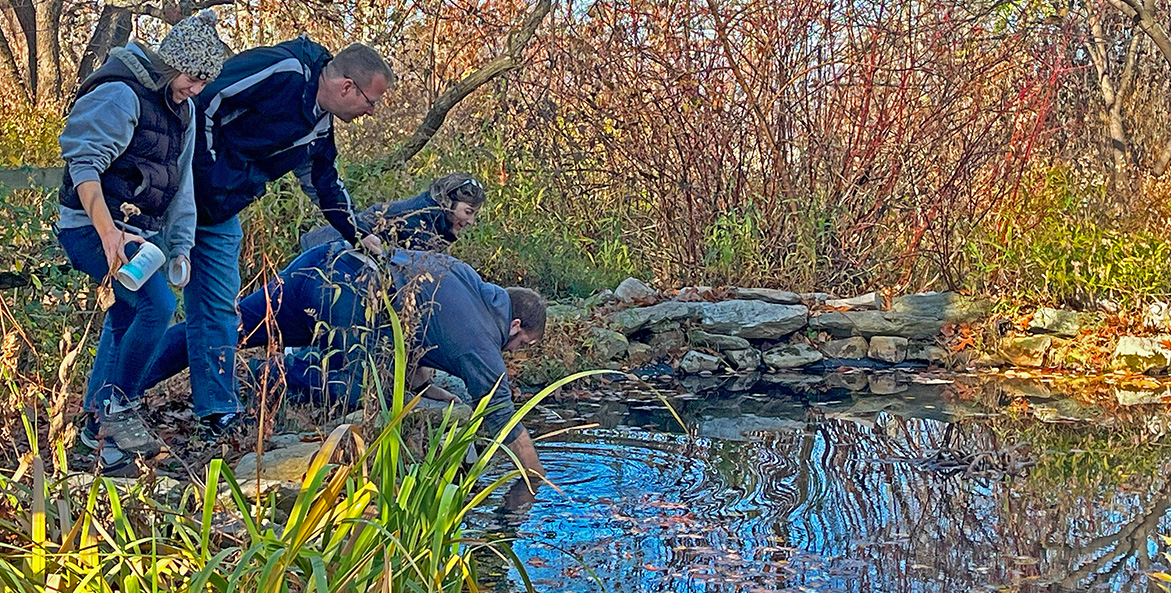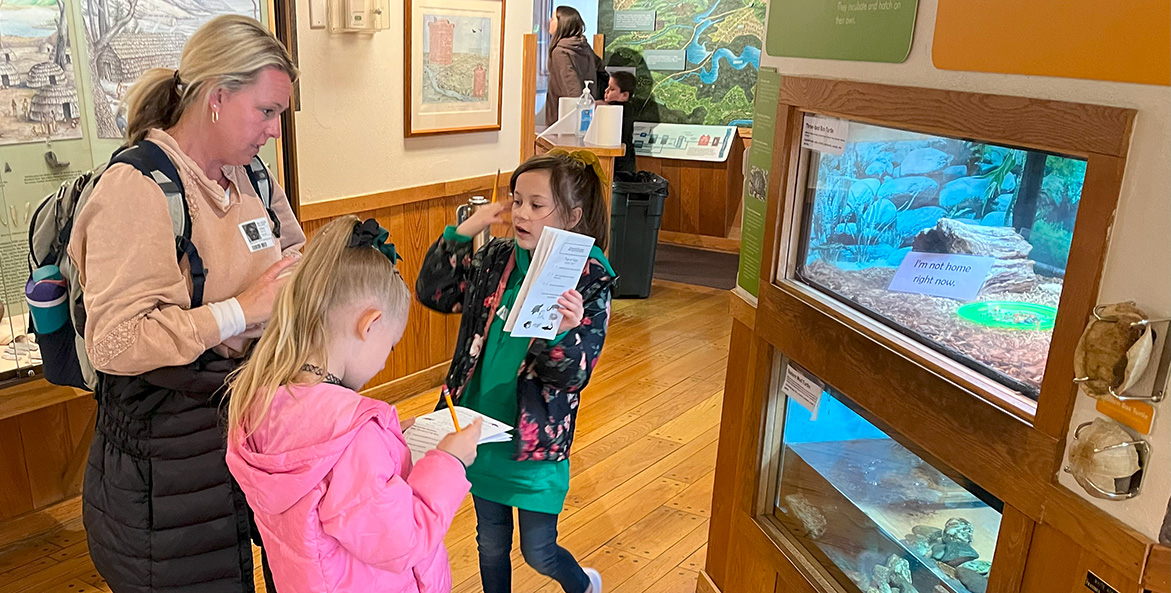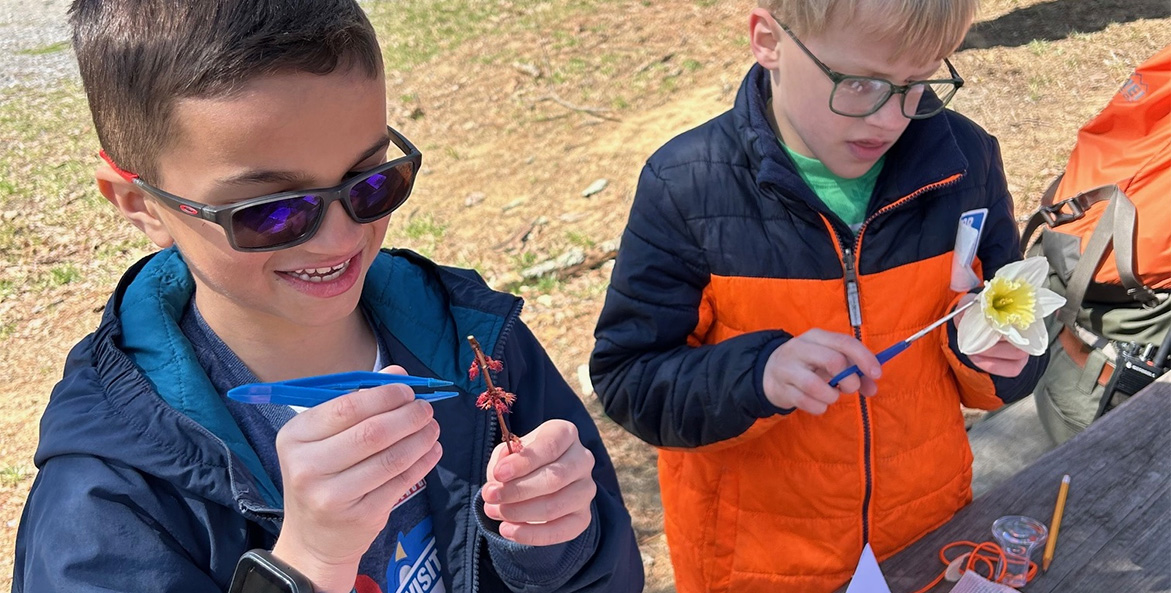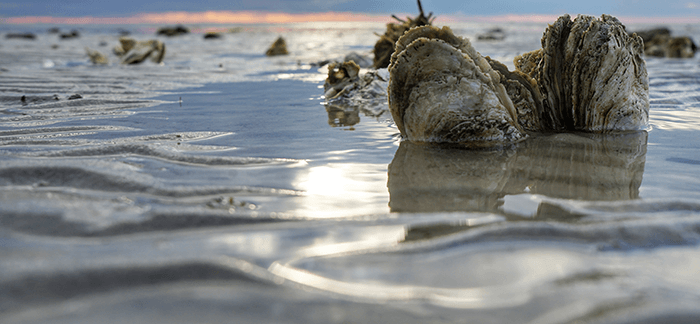Environmental science teacher Maddie Bentz used to use the Amazon rainforest and the reintroduction of wolves into Yellowstone National Park to teach her students about ecosystems and biodiversity.
But Bentz and her colleagues at Big Spring High School in Pennsylvania overhauled their curriculum last summer to focus on getting kids outdoors, investigating their local environment, and finding solutions to environmental challenges close to home.
Home in this case is rural Cumberland County, where hunting is a popular pastime. So this school year, Bentz made chronic wasting disease, a contagious, fatal brain infection in deer, the focus of the ecosystem unit.
We’re not just educating the students, but we’re educating our community. We live here. We should know what’s going on and how to take care of it.
She showed her students video clips of old news reports tracking the rise of chronic wasting disease in the Commonwealth. Her students, many of them hunters, immediately wanted to know what the situation is today and when they would learn about it. And they kept asking.
“They stayed engaged because they actually wanted to find out the answer,” Bentz said. “I know all the research states that this is the way we get students engaged. But it’s a whole other thing to watch it happen and watch kids who, they fall asleep in other classes, but, yet they’re paying attention” in this class.
Even better, they were talking about chronic wasting disease outside of class. One student brought it up with his family at dinner because they were going hunting that weekend. Another asked her parents if the deer meat in the freezer was safe to eat. She wanted to know how they could tell if it carried the disease.
“That’s all I could hope for in this content,” Bentz said. “We’re not just educating the students, but we’re educating our community. We live here. We should know what’s going on and how to take care of it.”
NOAA Grant Helps Improve Curriculum
Big Spring High School revised its environmental science curriculum last summer to incorporate Pennsylvania’s new Science, Technology, Engineering, Environmental Literacy, and Sustainability standards.
Revamping the entire course was “daunting and exhausting work,” Bentz said. But they were able to do it thanks to support from an environmental education grant CBF got from the National Oceanic and Atmospheric Administration (NOAA).
The NOAA Chesapeake Bay Watershed Education and Training (B-WET) grant program, which the Trump administration wants to eliminate, funds hands-on outdoor education for Bay region students and teachers that emphasizes investigating and addressing environmental problems in students’ communities.
The goal is to foster stewardship of the Bay and its rivers and streams, including south-central Pennsylvania’s Big Spring Creek, which ultimately flows in the Susquehanna River, the Bay’s largest tributary.
In 2022, CBF was awarded $272,000 to help 24 Harrisburg-area school districts train teachers and create curriculum that emphasizes getting students out of the classroom to investigate local environmental issues relevant to them, like how chronic wasting disease affects Cumberland County hunters, hikers, and homeowners.
CBF Pennsylvania Professional Learning Coordinator Jen Peglow tapped the grant to help teachers attend workshops where they learned how to create this curriculum. The NOAA B-WET program calls the lessons Bentz and her fellow environmental science teachers wrote “meaningful watershed education experiences.”

Teachers participate in water quality testing at Kings Gap State Park during a CBF training and development workshop.
Jennifer Peglow/CBF Staff
“If we had been [given] stipends, if we hadn’t had that workshop, if we hadn’t had the tools that Jen brought in for us that all stem from that grant,” Bentz said, “I don’t think I would have had the time or the energy or the motivation to be able to develop this curriculum to the levels we have.”
The grant funds have “truly been instrumental in creating this final product that I feel has hit on so many different levels, not only in our students, but in our community specifically,” Bentz added.
Providing Field Opportunities
Funds from the same grant also made it possible for nearby West Shore School District to bus 80 first graders, 80 second graders, 160 third graders, 300 fifth graders, and 29 teachers from three schools on field trips to experience first-hand what they were learning in class.
Kristin Stahl, the school district’s elementary enrichment specialist, said the $4,500 grant gave teachers and students “amazing opportunities” to make their curriculum “meaningful and relevant through the field trips that they went on.”

Students from Fishing Creek Elementary School enjoy a lesson at Nixon Park Nature Center in York, PA, thanks to a grant made available through the B-WET program.
Gwen Stull
First and second graders learning about backyard birds and Pennsylvania animals practiced using binoculars, went on nature scavenger hunts, and ate lunch by a stream at the Nixon Park Nature Center in York.
Fifth graders there participated in a stream study of macroinvertebrates, small organisms without backbones that are sensitive to water quality. Students also looked at the effects of runoff in their communities.
And third graders learning about macroinvertebrates searched for these aquatic creatures in streams at Gifford Pinchot State Park in Lewisberry and Kings Gap Environmental Center in Carlisle. Students examined the “macros” they found to see if they showed signs of healthy or polluted water.
The field trips were a big hit with both the students and the teachers, Stahl said. “We would love for this opportunity to present itself again in the future.”
Facing an Uncertain Future
The Trump administration budget request for next year would completely eliminate NOAA’s educational grants. It will be up to Congress to decide.
Fortunately, there’s time for environmental advocates in the Bay region to tell their members of Congress to reject the Trump administration’s budget cuts and keep funding NOAA’s B-WET program.
Rise up with us now.
Contact your members of Congress and urge them to do the right thing:
Protect environmental funding! Protect agency staffing!
Take Action
Since its inception in 2002, Chesapeake B-WET has reached more than 700,000 students and 25,000 teachers in the Bay region.
The numbers from just these two examples of the many initiatives funded by a single grant are impressive. The West Shore School district took 620 elementary school students and 29 teachers out to do field investigations.
Bentz estimates she has taught roughly 100 high school students using the new curriculum this school year. And Peglow figures she has worked with at least 50 teachers—who together could reach hundreds of students—since CBF got the grant in 2022.
Peglow said losing funds that help teachers use the outdoors as a teaching tool would be a huge setback for teachers and their students.
“We can do all the school science that we want reading out of a book and answering questions and things like that,” she said. “But to go and really behave like scientists—that’s something different altogether.”

Washington, D.C. Communications & Media Relations Manager, CBF
lcaruso@cbf.org
202-793-4485
Issues in this Post
Education Securing Funding for Key Federal Agencies CBF in Pennsylvania



